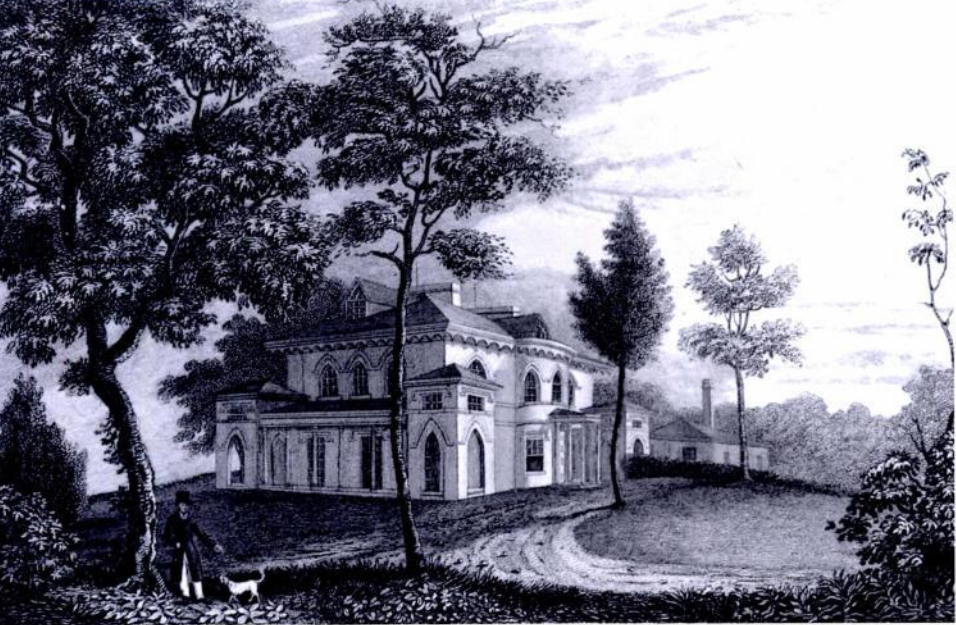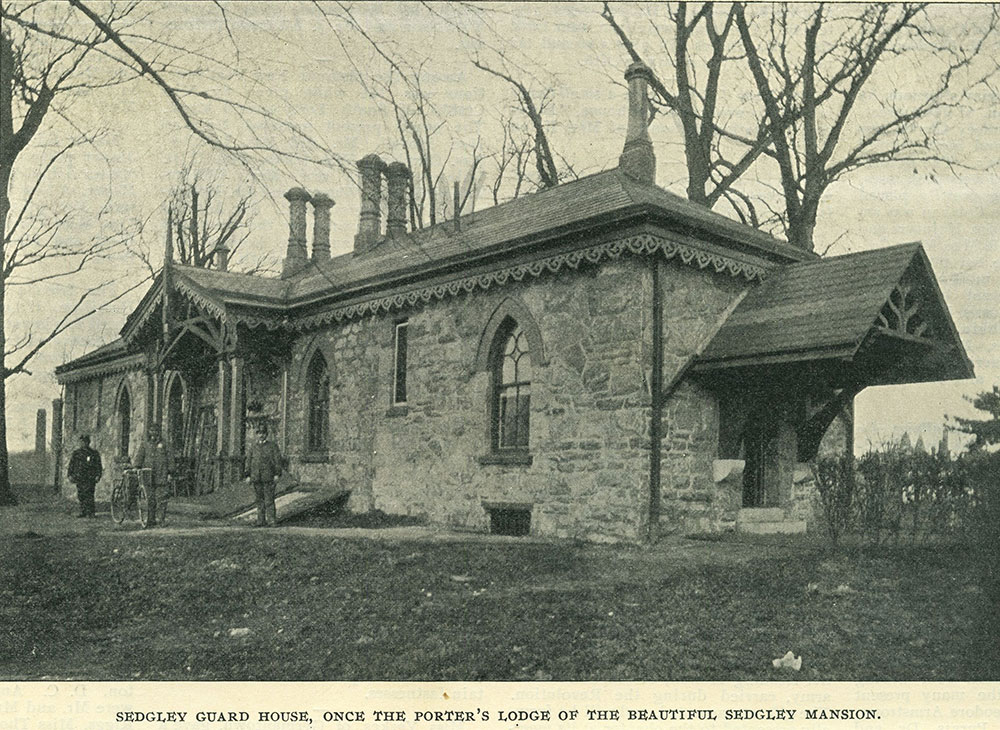Related Posts
- Buy Tickets for The Constitutional Walking Tour of Philadelphia – See 20+ Sites on a Primary Overview of Independence Park, including the Liberty Bell and Independence Hall
- Belmont Mansion and the Underground Railroad
- Lemon Hill Mansion
- Mount Pleasant Mansion
Adjacent to Lemon Hill Mansion, the birthplace of Fairmount Park, is a modest but elegant edifice, an esoteric relic that is the only remaining testament in Philadelphia to one of America’s greatest architects. Passed from owner to owner throughout the early 19th Century until its destruction in 1858, the scenic estate of Sedgley Mansion is now only remembered through street names and its adjacent servant’s quarters that we now know as Sedgley Mansion’s Porter’s House.
The land that Sedgley Mansion was built upon was originally a piece of Robert Morris’ vast estate known as the Hills. Morris is known as the financier of the American Revolution, and owned the President’s House, a stop on The Constitutional Walking Tour.
Despite his initial wealth as a merchant, Morris fell on hard times and found himself using the Hills to hide from his creditors. After the bankrupt Morris was eventually arrested, the Hills was divided and sold at sheriff’s sale in 1799 to another wealthy merchant, William Crammond. To design his new home, Crammond hired Benjamin Henry Latrobe, who was simultaneously designing the Centre Square pump house, a neoclassical and practical establishment that would win him widespread acclaim. Latrobe would later go on to design the iconic United States Capitol building in Washington, D.C., prompting him to be remembered as the father of American architecture. Although Latrobe’s legacy would be made in neoclassical design, the villa that he completed for Crammond in 1803 was in the Gothic Revival style, the first of its kind in the United States.

The finished home stood on a promontory 80 feet over the Schuylkill River, giving it a magnificent view of the countryside. Open arches exposed natural beauty, bringing Romantic English landscape design to the United States. Thomas H. Keels, local historian, describes Sedgley Mansion in his book Forgotten Philadelphia: Lost Architecture of the Quaker City as being a “two-and-a-half story rectangular, five-bay house with a red-hipped roof [and featuring] a one-story porch on all four sides and corner pavilions marked by tall arches.”
Despite being hired to design the house, Latrobe was not asked by Crammond to supervise its construction on-site, and the final product did not follow his initial layouts. Thus, Latrobe was deeply dismayed with the final product, believing that his design had been butchered and made disproportionate by contractors from the Carpenters’ Company, an elite guild whose home, Carpenters’ Hall (a stop on the Constitutional Walking Tour), was the site of the First Continental Congress. Despite Latrobe’s disapproval, Sedgley became renowned throughout the city, being used in celebratory art and inspiring more Gothic Revival buildings in Philadelphia and across the United States. However, Crammond was unable to enjoy the property for long. Crammond, like Morris before him, fell into deep debt, and had to sell Sedgley in 1806.

Over the next decade, three different owners possessed Sedgley. Samuel Mifflin, another prominent merchant, purchased Sedgley before selling it in 1812 to James Cowles Fisher, a shipping merchant. Fisher used the home as his summer residence, but over time he mostly left the estate vacant or leased it. That is until he sold the property in 1836 to Isaac Lloyd, a real estate speculator. The neighboring Lemon Hill in the same year was also sold to a real estate speculator, and, like Lemon Hill, Sedgley fell into disrepair as Lloyd cut down many of the estate’s trees and tried to urbanize the land with streets and building lots. This venture failed, and the house was neglected and left to languish.
The public pushed city officials to purchase Sedgley and add it to Lemon Hill’s estate, as the former had recently been salvaged by the newly created Fairmount Park. This public proposal was led by renowned civil engineer Frederic Graff Jr., grandson of bricklayer Jacob Graff, whose home is another stop on The Constitutional Walking Tour because it was rented to Thomas Jefferson when he was composing The Declaration of Independence. After initial hesitation from the city, a collection of private citizens in 1857 raised half of the purchase price of Sedgley, which was matched by the city and within the year, Sedgley was added to the fledgling Fairmount Park.
Tragically, the damage done during Lloyd’s possession left the house derelict, and the decay was so widespread that it was shortly demolished. However, the guard house and servant’s cottage, known as the Porter’s House, was able to survive. This humble building designed by Latrobe in the same Gothic Revival fashion was used as the headquarters and jail for the Fairmount Park guard. It is now used as an office space for an outdoor educational nonprofit, Outward Bound. Although Latrobe designed many buildings for Philadelphia, Sedgley Mansion’s Porter’s House is all that remains of his legacy in this city. The Porter’s House is a sobering example of the need for preservation, but also a hopeful example of the progress made for the restoration and reuse of urban historical establishments.



